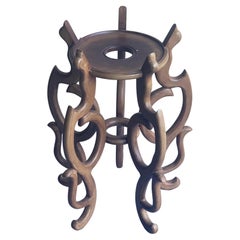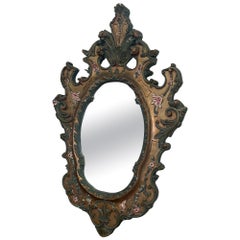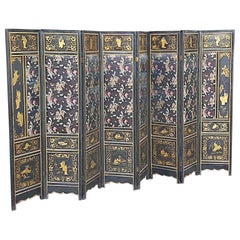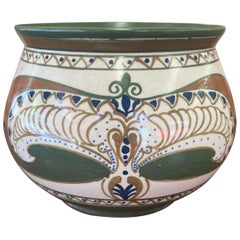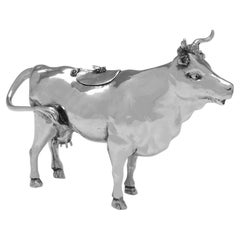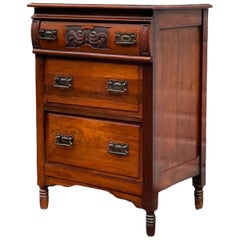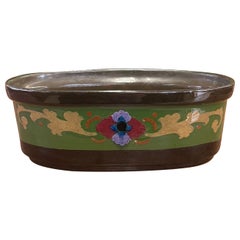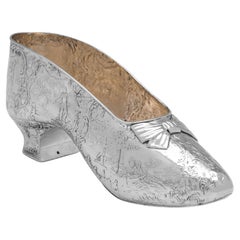Imported Antique Furniture
Early 20th Century Japanese Meiji Imported Antique Furniture
Zitan
Early 20th Century Chinese Chinese Export Imported Antique Furniture
Hardwood
1890s Mid-Century Modern Imported Antique Furniture
Glass, Wood
1820s English Regency Imported Antique Furniture
Silk, Lacquer
Early 1900s Mid-Century Modern Imported Antique Furniture
Ceramic
1890s English Victorian Imported Antique Furniture
Sterling Silver
1890s Victorian Imported Antique Furniture
Wood
Early 1900s Mid-Century Modern Imported Antique Furniture
Ceramic
1890s English Victorian Imported Antique Furniture
Sterling Silver
Early 1900s Mid-Century Modern Imported Antique Furniture
Ceramic
Late 19th Century Dutch Imported Antique Furniture
Sterling Silver
Early 1900s German Edwardian Imported Antique Furniture
Silver, Sterling Silver, Enamel
1890s English Rococo Revival Imported Antique Furniture
Sterling Silver
1910s English Imported Antique Furniture
Sterling Silver
1660s Danish Mid-Century Modern Imported Antique Furniture
Metal
1920s English Imported Antique Furniture
Sterling Silver
Early 1900s Edwardian Imported Antique Furniture
Wood
Early 1900s Dutch Imported Antique Furniture
Sterling Silver
1890s English British Colonial Imported Antique Furniture
Sterling Silver
1910s English Imported Antique Furniture
Sterling Silver
Late 19th Century Sri Lankan Dutch Colonial Imported Antique Furniture
Ebony, Mahogany, Satinwood
Mid-18th Century English George II Imported Antique Furniture
Padouk
Late 18th Century Irish Folk Art Imported Antique Furniture
Oak
1920s French Art Deco Imported Antique Furniture
Wood
1830s Swedish Biedermeier Imported Antique Furniture
Wood
Late 19th Century Sri Lankan British Colonial Imported Antique Furniture
Brass
Early 20th Century Sri Lankan British Colonial Imported Antique Furniture
Brass
1920s Mid-Century Modern Imported Antique Furniture
Birch
1820s French Restauration Imported Antique Furniture
Bronze
Late 19th Century English Victorian Imported Antique Furniture
Leather, Mahogany, Satinwood
1850s Imported Antique Furniture
Leather, Wood
19th Century English Aesthetic Movement Imported Antique Furniture
Ormolu
1860s English Victorian Imported Antique Furniture
Mahogany, Satinwood
Early 20th Century Imported Antique Furniture
Mahogany
1890s English Edwardian Imported Antique Furniture
Wood
Late 19th Century English Edwardian Imported Antique Furniture
Satinwood
Late 19th Century French Louis XVI Imported Antique Furniture
Agate, Bronze
Late 19th Century English Edwardian Imported Antique Furniture
Wood
19th Century British Arts and Crafts Imported Antique Furniture
Bronze
Early 20th Century English Edwardian Imported Antique Furniture
Mahogany, Satinwood
1880s English Sheraton Imported Antique Furniture
Satinwood
19th Century English Victorian Imported Antique Furniture
Mahogany
19th Century English Victorian Imported Antique Furniture
Other
Mid-19th Century English Victorian Imported Antique Furniture
Mahogany, Leather, Glass
19th Century English Victorian Imported Antique Furniture
Leather, Hardwood
1880s French Japonisme Imported Antique Furniture
Wood
Late 19th Century English Edwardian Imported Antique Furniture
Mahogany
Late 19th Century English Imported Antique Furniture
Oak
1890s Victorian Imported Antique Furniture
Oak
19th Century English Victorian Imported Antique Furniture
Oak
Early 20th Century English Imported Antique Furniture
Mahogany
Early 20th Century Imported Antique Furniture
Mahogany
Mid-19th Century European Rococo Imported Antique Furniture
Lacquer
19th Century English Imported Antique Furniture
19th Century English Imported Antique Furniture
19th Century English Imported Antique Furniture
Bamboo, Walnut
1870s Chinese Chinese Export Imported Antique Furniture
Wicker
1920s Greek Hollywood Regency Imported Antique Furniture
Glass
1910s British Other Imported Antique Furniture
Silver
19th Century German Victorian Imported Antique Furniture
Silver, Sterling Silver
- 1
Imported Antique Furniture For Sale on 1stDibs
How Much is a Imported Antique Furniture?
- 1stDibs ExpertMay 3, 2024The importance of furniture is that it makes spaces more functional and comfortable. In homes, furniture provides places to sit and sleep and also functions as storage, allowing people to neatly organize their personal belongings. Furniture also makes rooms more visually appealing. In these ways, furniture improves the quality of life for the people who use it. Shop a wide variety of antique, vintage and contemporary furniture on 1stDibs.
- 1stDibs ExpertFebruary 27, 2024What the most important household furniture is comes down to personal opinion. Some people may think that a home's primary dining table is the most essential furnishing because it is where families gather to enjoy meals. Others may feel that beds are more crucial to the functionality of a home since they help set the stage for a good night's sleep. It can even be argued that particular pieces of storage furniture may be of importance because they keep belongings clean, protected from dust and sun exposure and neatly organized. Shop a wide range of furniture on 1stDibs.
- 1stDibs ExpertApril 5, 2022Heywood-Wakefield furniture is an American brand founded in 1897. The mid-century modern furniture manufacturer uses sustainable, durable Northern Yellow birch, which gives its pieces a rich yellow color. Shop a collection of Heywood-Wakefield furniture from some of the world’s top sellers on 1stDibs.
- 1stDibs ExpertAugust 26, 2020
The more optimal its condition, the more valuable an antique will likely be. If an item is perfectly uniform with no color, this is likely indicative that it is a modern mass-produced reproduction and thus, less valuable. When 1stDibs vets an item, we look for item condition and patina to determine if an item shows signs of age.
- Is antique furniture in style?1 Answer1stDibs ExpertApril 22, 2024Yes, antique furniture is in style. Many people appreciate the beauty and handcrafted character of antique furniture and love the idea of owning pieces with a rich history. Remember that style preferences are nothing if not fluid, meaning what's in one year may not be the next. So, in choosing the furniture you're planning to live with, you should pay less attention to interior design fads than to what speaks to you. That way, you can select pieces that will add long-term character to your home. On 1stDibs, find a large collection of antique furniture.
- 1stDibs ExpertMay 30, 2024To identify your antique furniture, look for an engraving, tag, label or other marking that indicates who produced it. You may find it on the bottom or back of your furniture or inside a drawer or cabinet. Once you have located the marking, you can snap a photo of it and use a reverse image search to try and identify the maker. Or, you can type a description of the mark into a search engine. Alternatively, you can use the services of a certified appraiser or antiques dealer to get assistance with identification. On 1stDibs, shop a large selection of antique furniture.
- What makes furniture an antique?1 Answer1stDibs ExpertAugust 15, 2019
A piece of furniture is considered an antique if it is at least 100 years old.
- 1stDibs ExpertApril 5, 2024To know if your furniture is antique, look for labels and markings that indicate the maker. From there, you can use trusted online resources to determine when they were active and examine images to try to estimate the age of your piece. Furniture produced 100 years ago or more is antique. You can also have your furniture assessed by an appraiser or antiques dealer to learn about its age. On 1stDibs, explore a large collection of antique furniture.
- 1stDibs ExpertMay 14, 2024Many antique furniture brands are popular. While trends in collecting do vary over time, some makers consistently remain highly sought after. Among them are J. & J.W. Meeks, John Henry Belter, R. J. Horner and Co., Stickley Furniture, George Hepplewhite, Josef Dannhauser, Thomas Chippendale and Thomas Sheridan. On 1stDibs, shop a variety of antique furniture.
- 1stDibs ExpertFebruary 22, 2021Antique furniture can be worth quite a lot, particularly if it is in good quality. The rarer the piece, the higher the value.
- 1stDibs ExpertFebruary 13, 2024Whether antique furniture is making a comeback is a matter of opinion. Many people would argue that antique furniture never faded from fashion, as there have always been individuals who love the idea of owning pieces that have history. Some of the most popular styles for antique furniture include Art Deco, Arts and Crafts, Renaissance Revival, Elizabethan, Gothic Revival, Victorian and Chippendale. Find a large collection of antique furniture from some of the world's top dealers on 1stDibs.
- 1stDibs ExpertFebruary 1, 2024To date antique furniture from the UK, first look for identifying markings on the piece. You can then use trusted online resources to determine when the maker was active. From there, you may be able to estimate the year of production by looking at images of other furniture the maker produced. An expert appraiser or antiques dealer can also aid you in the dating process. Find a large selection of antique furniture on 1stDibs.
- 1stDibs ExpertFebruary 22, 2021There are a number of factors that can indicate if your antique furniture is valuable. When determining the value of antique furniture, consider its rarity. Additionally, it is important to determine the quality and condition of vintage furniture. If unsure of the value of your vintage furniture, have it appraised.
- 1stDibs ExpertNovember 13, 2024How old furniture that is called antique can be is typically at least 100 years. People usually call furniture between 20 and 99 years old vintage. Contemporary is the word for furniture manufactured within the last 20 years. On 1stDibs, shop a large selection of antique, vintage and contemporary furniture from some of the world's top sellers.
- 1stDibs ExpertOctober 5, 2021The best finish for antique furniture is a matter of liking. But film finish is recommended by experts as it leaves a thick coat of film on the wood surface which protects wood from water and scratches. Shellac or varnish and water base are commonly used film finishes. Find an exquisite collection of antique, new and vintage furniture on 1stDibs
 PAGODA REDOctober 7, 2020
PAGODA REDOctober 7, 2020To determine the age of a Chinese furniture piece, look carefully at the joinery and finish. Natural expansion and contraction of the wood over time will cause a joint to protrude or retract, distorting a once-seamless fit. Antique lacquer finishes become crackled and worn over time. Areas of exposed wood, such as the underside of a table, the footrest of a chair, or the back of a cabinet should appear raw and dry compared to the finished surface. With use, the legs of tables and chairs become weathered near the bottom from precipitation and use.
- 1stDibs ExpertAugust 29, 2024To tell how old your antique furniture is, research the maker using trusted online resources. You may find that the furniture maker was active for only a short period, giving you the ability to roughly estimate its age. For manufacturers and designers with a long history of production, consider the style of your furniture and look for images of similar pieces published online. Because it may be difficult to date furniture on your own, consider consulting a certified appraiser or knowledgeable antique dealer. On 1stDibs, explore a variety of antique furniture.
- 1stDibs ExpertAugust 20, 2024To tell what your antique furniture is worth, look at sales histories on trusted online platforms and read valuation guides posted on trusted online resources. The maker, type, style, age and condition of your furniture will impact its value. Researching furniture produced by the same maker is a good starting point. A certified appraiser or knowledgeable antique dealer can also aid you in the valuation process. Find a large collection of antique furniture on 1stDibs.
- 1stDibs ExpertNovember 4, 2024To identify antique Chinese furniture, look carefully at its details. Chinese craftsmen often built furniture using mortise and tenon joinery, eliminating the need for nails and screws. If you see this type of hardware, your piece is likely not at least 100 years old, especially if the hardware still looks new and shiny. Since antique furniture was handmade, you will normally see slight imperfections, such as tool marks or slight variations in carvings. Pieces that appear completely uniform and pristine are less often genuine antiques.
When present, maker's marks can also be helpful. Research the marks to learn more about when the maker was active and producing pieces like yours. Alternatively, you can have a certified appraiser or experienced antique dealer evaluate your furniture for you.
Shop an assortment of antique Chinese furniture. - 1stDibs ExpertOctober 24, 2024To tell antique furniture from reproduction, first check for a maker's mark. By researching the maker associated with the marking using trusted online resources, you can determine when they were active. If the company was in business 100 years ago or more, your piece may be an antique, but if the company's history began more recently, your piece is likely a reproduction. If you can't locate a marking, study the details of the furniture up close. Genuine antiques will often show tool marks and slight variations in carved details because they were typically handcrafted. Most contemporary furniture is machine-made, so you won't usually see these types of characteristics. When in doubt, have a certified appraiser or knowledgeable antique dealer evaluate your furniture. On 1stDibs, find a wide variety of antique furniture.

